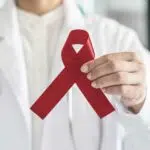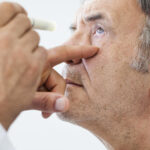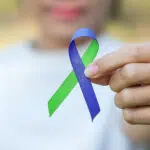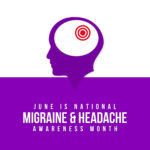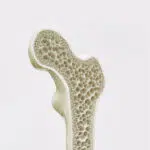Scleroderma Awareness Month is observed in June every year. Scleroderma is a chronic autoimmune connective tissue disease in which the body produces excess collagen. This causes hardening and thickening of the skin and internal organs. Scleroderma has no known cause or cure. Diagnosing it is difficult because its symptoms are similar to other diseases. There are two main types of scleroderma. Diffuse scleroderma results in the hardening of the skin, affecting internal organs like the heart, kidneys, and lungs. Limited scleroderma is less likely to affect internal organs, and the skin hardening is not as severe.
History of Scleroderma Awareness Month
Scleroderma borrows from the Greek words ‘skleros’ and ‘derma,’ which mean ‘hard skin.’ Hippocrates, the father of medicine, described people affected by this condition around 400 B.C. It wasn’t until the 1700s that doctors began seriously examining this condition. Treatments at the time focused on returning the skin to normal condition and increasing flexibility, using a combination of vapor baths and low doses of quicksilver.
By the late 19th century, physicians had noted the systemic manifestations of scleroderma. Dr. Thomas Addison was the first to describe different types of scleroderma in 1854. Localized scleroderma, which he called morphea, affected the skin tissues but not internal organs. Systemic scleroderma affected the skin, blood vessels, and internal organs. In 1863, Dr. Auguste Gabriel Maurice Raynaud expanded on this with his discovery of Raynaud’s syndrome. This condition interfered with the flow of blood to the fingers and toes, resulting in discoloration, numbness, and pain. Raynaud’s findings inspired the R in CREST syndrome, a form of scleroderma. Today, we now know that around 90% of scleroderma patients have Raynaud’s syndrome.
Since 1998, the National Scleroderma Foundation (N.S.F.) has dedicated itself to educating the public and spreading awareness of this rare autoimmune disease. Sponsored by the N.S.F. and other scleroderma organizations, National Scleroderma Awareness Month seeks to spark a conversation on this disease. This holiday encourages advocacy, fundraising, research, support groups, and public awareness programs for this cause.
Scleroderma Awareness Month timeline
Dr. Carlo Curzio, an Italian doctor from Naples, treats a patient whose symptoms he describes as “hard, wood-like skin.”
Italian Physician Giovambattista Fantonetti coins the term ‘scleroderma’ to describe a patient with dark leathery skin and reduced joint mobility caused by tightness of the skin.
Dr. Abraham B. Arnold records the first case of scleroderma in the U.S. in a 52-year-old patient who developed a cough followed by hardening of the skin on his feet and hands.
The American College of Rheumatology agrees on diagnostic criteria for scleroderma.
Scleroderma Awareness Month FAQs
Is there a ribbon for scleroderma?
The teal ribbon represents scleroderma awareness.
What is the symbol for scleroderma?
The international symbol for scleroderma is the sunflower.
Can you have mild scleroderma?
Some forms of this disease, such as localized scleroderma, are mild.
How to Observe Scleroderma Awareness Month
Take the pledge
Pledge your support during National Scleroderma Awareness Month. Every pledge makes one more person more informed about the condition. This helps raise funds for the cause and ensures more research is conducted on scleroderma.
Become an advocate
Through organizations like the National Scleroderma Foundation, you can take advocacy action. Reach out to your senators and help protect scleroderma research funding.
Donate some money
Donations help fund patient education workshops and research on the disease. They also benefit support groups nationwide.
5 Important Facts About Scleroderma
It affects mostly women
80% of scleroderma patients are women.
It is not contagious
You may think because it affects the skin and internal organs that scleroderma is infectious, but this disease cannot be spread from person to person.
The symptoms may vary
Scleroderma symptoms range from very mild to life-threatening, and people with it may display different sets of symptoms.
Patients may develop kidney failure
Approximately 15% to 20% of patients with scleroderma may suffer from kidney failure if they don’t get diagnosed and treated early.
Some patients develop heart complications
Roughly 10% of scleroderma patients have heart problems such as an irregular heart rhythm and fluid retention.
Why Scleroderma Awareness Month is Important
Being a part of something bigger
It doesn’t matter if you’re personally affected or have loved ones with scleroderma. During National Scleroderma Awareness Month, we come together as a community. This helps everyone involved feel like a part of something greater than themselves.
It offers comfort and support
Because scleroderma has no known cause or cure, patients with this autoimmune disease often feel scared, confused, and alone. During National Scleroderma Awareness Month, they get access to support and education. They can manage their conditions better and find comfort in knowing that they’re not the only ones going through it.
More people get to know about scleroderma
Every year in June, more people learn the facts about scleroderma. They also learn about the latest research findings and treatment methods. This translates to more support, advocacy, and funding for the cause.
Scleroderma Awareness Month dates
| Year | Date | Day |
|---|---|---|
| 2026 | June 1 | Monday |
| 2027 | June 1 | Tuesday |
| 2028 | June 1 | Thursday |
| 2029 | June 1 | Friday |
| 2030 | June 1 | Saturday |










































